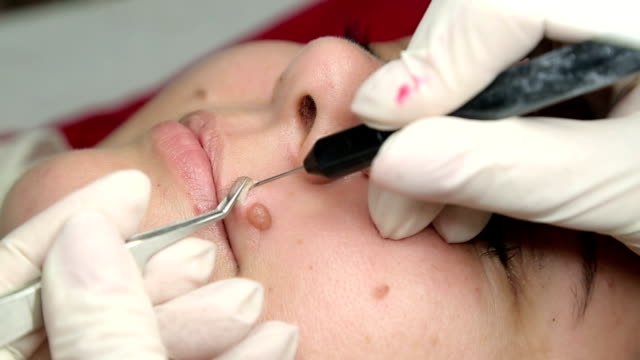
1. Introduction
1.1 Overview of Mole Removal
Mole removal is a common cosmetic and medical procedure aimed at eliminating moles from the skin. Moles, or nevi, are typically benign growths, but their appearance and changes can sometimes indicate underlying health issues. With advancements in medical technology, there are several effective methods for mole removal, each suited to different needs and circumstances.
1.2 Importance of Choosing the Right Treatment
Selecting the appropriate Mole Removal Treatments in Abu Dhabi is crucial for ensuring optimal results and minimizing potential risks. Different treatments offer varying levels of effectiveness, recovery times, and potential side effects. Understanding these options helps individuals make informed decisions tailored to their specific needs.
2. Understanding Mole Removal Treatments
2.1 Types of Mole Removal Treatments
2.1.1 Surgical Excision
Surgical excision involves removing the mole along with a margin of surrounding skin. This method is often recommended for moles suspected of being cancerous or when a large mole needs to be removed. The procedure is typically performed under local anesthesia, and stitches are used to close the wound. Post-surgical care is crucial to avoid complications and ensure proper healing.
2.1.2 Laser Removal
Laser removal uses targeted light beams to destroy the mole’s pigment cells. This method is less invasive compared to surgical excision and is suitable for smaller, superficial moles. Laser removal generally involves minimal discomfort and a quicker recovery time, but multiple sessions might be required for complete removal.
2.1.3 Cryotherapy
Cryotherapy involves freezing the mole with liquid nitrogen, causing it to fall off over time. This technique is effective for treating benign moles and warts. While generally safe, it may result in temporary skin discoloration or scarring.
2.1.4 Electrosurgery
Electrosurgery uses an electric current to burn off the mole. This method is suitable for smaller moles and can be combined with other treatments like curettage (scraping). Electrosurgery offers precision and quick recovery but may require follow-up care to ensure complete removal.
2.2 Comparing Treatments: Pros and Cons
Each mole removal method has its advantages and drawbacks. Surgical excision is highly effective but can be more invasive. Laser removal is less invasive but may require multiple sessions. Cryotherapy and electrosurgery offer effective alternatives but may come with specific side effects or risks. Evaluating these factors helps in choosing the most appropriate treatment.
3. Factors to Consider When Choosing a Treatment
3.1 Type and Size of Mole
The type and size of the mole are significant factors in determining the most suitable removal method. Larger moles or those with irregular borders may require surgical excision for complete removal and accurate diagnosis.
3.2 Skin Type and Sensitivity
Individuals with sensitive skin or certain skin conditions may need to consider treatments that minimize irritation. For instance, laser removal may be preferable for sensitive skin, whereas cryotherapy might be less suitable.
3.3 Potential Risks and Side Effects
Understanding potential risks and side effects associated with each treatment method is essential. Surgical excision may lead to scarring, while laser removal could cause temporary pigmentation changes. Evaluating these risks helps in making an informed choice.
3.4 Recovery Time and Aftercare
Recovery time varies depending on the treatment method. Surgical excision typically requires a longer recovery period compared to laser removal or cryotherapy. Proper aftercare is crucial to ensure healing and prevent complications.
3.5 Cost and Budget
The cost of mole removal treatments can vary widely based on the method used, the size of the mole, and the clinic’s location. It’s important to consider your budget and explore options that provide the best value for the cost.
4. Consulting with Dermatologists in Abu Dhabi
4.1 Finding a Qualified Dermatologist
Finding a qualified dermatologist in Abu Dhabi is vital for receiving expert advice and treatment. Look for practitioners with specialized training and experience in mole removal procedures.
4.2 What to Expect During a Consultation
During a consultation, your dermatologist will evaluate your mole, discuss available treatment options, and address any concerns. This is an opportunity to ask questions and understand the recommended treatment plan.
4.3 Questions to Ask Your Dermatologist
Prepare a list of questions to ask during your consultation, such as:
- What treatment method do you recommend and why?
- What are the potential risks and side effects?
- How long will the recovery period be?
- Will the treatment leave a scar?
5. Preparing for Mole Removal
5.1 Pre-Treatment Guidelines
Before undergoing mole removal, follow any pre-treatment guidelines provided by your dermatologist. This may include avoiding certain medications, refraining from sun exposure, or preparing your skin for the procedure.
5.2 How to Prepare Mentally and Physically
Mentally prepare yourself by understanding the procedure and recovery process. Physically, ensure you’re in good health and follow any pre-procedure instructions to minimize complications.
6. Post-Treatment Care
6.1 Immediate Aftercare
Immediately after the treatment, follow your dermatologist’s instructions for wound care, including keeping the area clean and protected. Avoid picking at the site or exposing it to unnecessary stress.
6.2 Long-Term Care and Monitoring
Long-term care involves monitoring the treated area for any signs of infection or complications. Follow-up appointments with your dermatologist are important for ensuring proper healing and addressing any concerns.
6.3 Managing Possible Side Effects
Be aware of possible side effects such as redness, swelling, or scarring. Managing these side effects involves following aftercare instructions and seeking advice from your dermatologist if issues arise.
7. Why Abu Dhabi is a Leading Hub for Mole Removal Treatments
7.1 State-of-the-Art Facilities
Abu Dhabi boasts state-of-the-art medical facilities equipped with advanced technology for mole removal treatments. This ensures high-quality care and effective results.
7.2 Expert Practitioners
The city is home to numerous expert dermatologists specializing in mole removal. Their expertise and experience contribute to successful outcomes and patient satisfaction.
7.3 Advanced Technology and Techniques
Abu Dhabi’s clinics utilize the latest technology and techniques in mole removal, offering patients access to innovative and effective treatment options.
8. Conclusion
Choosing the right mole removal treatment in Abu Dhabi involves understanding various methods, considering personal factors, and consulting with qualified dermatologists. By evaluating your needs and exploring available options, you can achieve optimal results and maintain skin health. Abu Dhabi’s advanced medical facilities and expert practitioners provide a solid foundation for making informed decisions and ensuring successful outcomes.
9. FAQs
9.1 What is the most effective mole removal method?
The most effective method depends on factors like the mole’s type and size. Surgical excision is often recommended for larger or potentially cancerous moles, while laser removal is suitable for smaller, benign moles.
9.2 How much does mole removal cost in Abu Dhabi?
The cost of mole removal in Abu Dhabi varies based on the treatment method, the size of the mole, and the clinic’s location. It’s best to consult with clinics to get accurate pricing information.
9.3 Are mole removal treatments covered by insurance?
Coverage for mole removal treatments depends on your insurance plan. Some plans may cover the cost if the procedure is deemed medically necessary. Check with your insurance provider for specific details.
9.4 How long is the recovery time after mole removal?
Recovery time varies depending on the treatment method. Surgical excision typically requires a longer recovery period, while laser removal or cryotherapy generally involves shorter recovery times.
9.5 Can mole removal treatments leave scars?
Mole removal treatments can leave scars, particularly with surgical excision. However, with proper aftercare and following your dermatologist’s instructions, the appearance of scars can be minimized.



